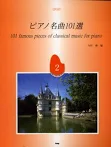Debussy, Claude Achille : 2 Arabesques Première arabesque E-Dur
Work Overview
Genre:pieces
Total Playing Time:4 min 00 sec
Copyright:Public Domain
Commentary (2)
Author : Shiraishi, Yuriko
Last Updated: November 6, 2019
[Open]
Author : Shiraishi, Yuriko
In E major, 4/4 time, Andantino con moto. The piece as a whole can be understood as being in ternary form.
Part 1 (Measures 1-38)
Part 1 (measures 1-38) consists of four sections. In the first section (measures 1-5), after a two-measure triplet melody, upper and lower voices are added from measure 3, and the main motif that unifies this piece, "A-G#-F#-E" (Example 1), appears in the melody of measures 5-6. Following the second section (measures 6-16), characterized by a freely spun melody over left-hand arpeggios, the main motif returns in the third section (measures 17-18). This then leads into the fourth section (measures 19-38), which features a freely singing melody, concluding with a perfect cadence (V-I).
Part 2 (Measures 39-70)
Part 2 (measures 39-70) modulates to A major, where an eight-measure theme is presented with a somewhat relaxed motion (measures 39-46). The inner voices of its opening two measures utilize the "A-G-F(-E)" motif, allowing for the discovery of consistency within the piece (measures 39-40) (Example 2). This eight-measure theme is re-presented after a transitional passage (measures 47-55) (measures 55-62), and then presented once more decisively at f (forte) in C major, returning to the tonic key (measures 63-70).
Part 3 (Measures 71-107)
Part 3 (measures 71-107) essentially recapitulates the first to third sections of Part 1 (measures 71-88), although the main motif is added to the upper voice in the opening two measures. From measure 89 onwards, the piece enters the coda, following a four-voice descending transitional passage (measures 89-94). The "A-G#-F#-E" motif is sounded, accompanied by triplet ornamentation (measures 95-99) (Example 3), recalling the second section of Part 1, and the piece concludes lightly (measures 100-107).
Example 1
Arabesque No. 1, Measures 5-6[1]
Example 2
Arabesque No. 1, Measures 39-40
Example 3
Arabesque No. 1, Measures 95-99
[1] The scores cited in this commentary are as follows:
Claude Debussy. 1904. 1ère Arabesque, Paris: Durand, D. & F. 4395, accessed 2 November 2019, International Scores Music Library Project, http://conquest.imslp.info/files/imglnks/usimg/e/ef/IMSLP255353-PMLP02383-Debussy,_Claude-Deux_Arabesques_Durand_4395_scan.pdf.
Author : Ooi, Kazurou
Last Updated: August 4, 2021
[Open]
Author : Ooi, Kazurou
First, one must understand French music. This piece is often given to beginners of French music, making it relatively easy to play. However, before attempting it, it is advisable to study French music.
A characteristic feature of French music is its evocation of watercolors. It involves pictorial rather than psychological depiction. Furthermore, it suggests blurred lines, akin to a watercolor painting, rather than sharply defined ones. How does this influence the music? Fundamentally, the touch is not a harsh, marcato-like one, but rather a sweet and soft touch. Instead of frequently changing the pedal to create a clean sound, one should avoid excessive pedal changes, prioritize the bass over slight blurring, and aim for a rich, layered sonority.
From the beginning, triplets appear. These triplets should never be played marcato, like a machine gun, but rather with a soft touch and absolutely no force. The pedal should be used continuously. Generally, consider one pedal per chord. In measures 1-2, the pedal should be changed every two beats, each time the chord changes. The same applies to measures 3-4. In measure 5, since there is one chord throughout the measure, sustain the lowest note, B (H in German notation), with the pedal. Although there is a ritardando and the tempo will slow slightly, change the pedal in measure 5 only if the resulting blurring becomes absolutely unbearable. At least for beats 1-3, keep the pedal depressed. When entering beat 4, you may change the pedal depending on the situation.
Furthermore, this type of music frequently employs rubato. Never approach it with the metronomic precision of classical music. For example, in measures 6-7, the goal note of this phrase is D-sharp (Dis) in the right hand of measure 7; therefore, play the triplets in one continuous sweep towards it. Once the triplets begin from beat 2 of measure 6, propel the music forward without stopping until the D-sharp on beat 2 of measure 7. Upon reaching D-sharp, then pull the music back and relax the tempo.
In measures 26-27, the bass A in the left hand on beat 1 of measure 26 should be sustained with the pedal for two measures. Keeping the pedal depressed will cause some blurring in the inner voice triplets. However, such a degree of blurring is acceptable in French music. In fact, the loss of the sustained bass by changing the pedal would be a greater detriment.
In measure 41, many performers change the pedal on beat 2, but since the bass E on beat 1 should be sustained, the pedal should not be changed for the entire measure.
PTNA & Partner Channel Videos(12items) View More
Sheet MusicView More
Scores List (64)

(株)ドレミ楽譜出版社

(株)音楽之友社

(株)全音楽譜出版社

(株)音楽之友社

(株)ヤマハミュージックエンタテインメントホールディングス

(株)音楽之友社

KMP(ケイ・エム・ピー) ケイエムピー

ハンナ(ショパン)

ミュージックランド

ミュージックランド

(株)リットーミュージック

ミュージックランド

ミュージックランド

ミュージックランド

(株)シンコーミュージックエンタテイメント

(株)ドレミ楽譜出版社

(株)学研プラス

ミュージックランド

KMP(ケイ・エム・ピー) ケイエムピー

ミュージックランド

(株)シンコーミュージックエンタテイメント

(株)ドレミ楽譜出版社

ミュージックランド

ミュージックランド

ミュージックランド

(株)シンコーミュージックエンタテイメント

ミュージックランド

(株)全音楽譜出版社

ハンナ(ショパン)

(株)ヤマハミュージックエンタテインメントホールディングス

ハンナ(ショパン)

ミュージックランド

(株)シンコーミュージックエンタテイメント

(株)ドレミ楽譜出版社

(株)シンコーミュージックエンタテイメント

ハンナ(ショパン)

ハンナ(ショパン)

ハンナ(ショパン)

KMP(ケイ・エム・ピー) ケイエムピー

KMP(ケイ・エム・ピー) ケイエムピー

(株)ヤマハミュージックエンタテインメントホールディングス

ミュージックランド

ミュージックランド

(株)シンコーミュージックエンタテイメント

ミュージックランド

ミュージックランド

(株)全音楽譜出版社

(株)全音楽譜出版社

ミュージックランド

(株)シンコーミュージックエンタテイメント

ミュージックランド

(株)シンコーミュージックエンタテイメント

KMP(ケイ・エム・ピー) ケイエムピー

ミュージックランド

(株)シンコーミュージックエンタテイメント

(株)ヤマハミュージックエンタテインメントホールディングス

KMP(ケイ・エム・ピー) ケイエムピー

(株)ヤマハミュージックエンタテインメントホールディングス

(株)ヤマハミュージックエンタテインメントホールディングス

(株)学研プラス

Neil A. Kjos Music Company

(株)全音楽譜出版社

















